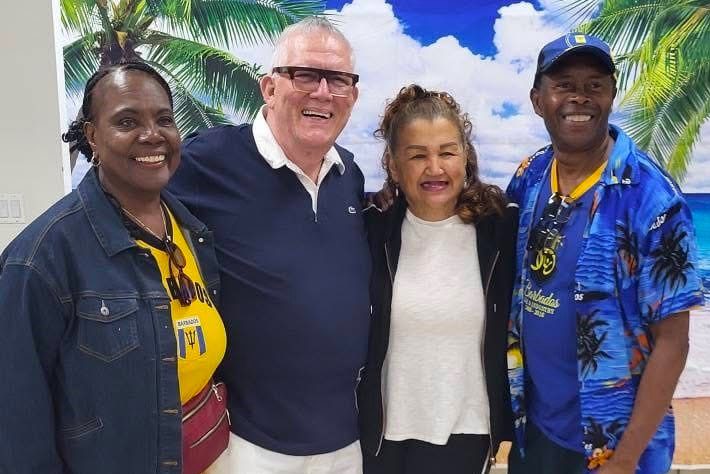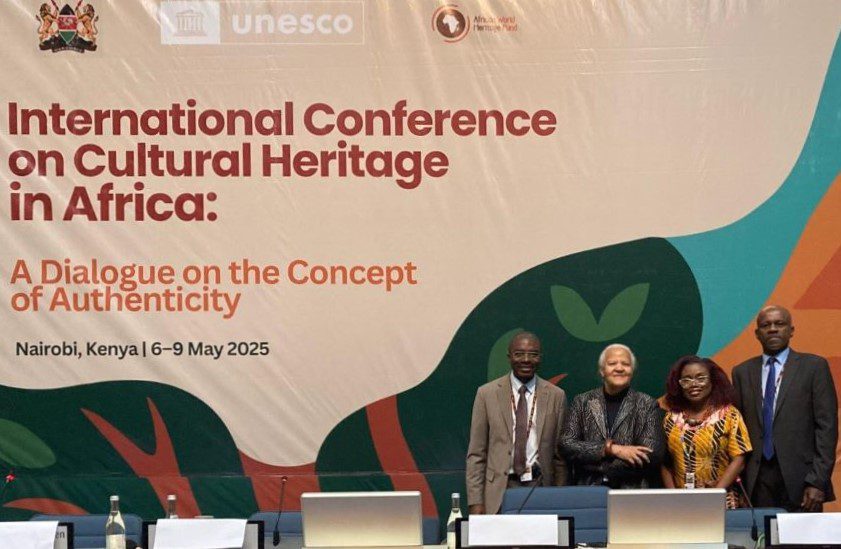70 gold awardees will be on show at Saturday’s Expo
Almost 70 gold awards have been won in this year’s NIFCA Visual Arts Competition.
Come Saturday at 10 a.m. when the official opening of the Adult and Children’s Exhibitions takes place at the Queen’s Park Gallery and the Steel Shed, the public will get to see those entries plus those earning silver and bronze awards in the first post-COVID NIFCA competition.
The NIFCA Visual Arts Competition – for juniors and non-professionals – spans the categories of Fine Art, Craft and Photography and is a highlight of thefestival which is celebrating its 50th anniversary under the theme “50 Years of Excellence Remembered”.
The National Cultural Foundation’s Curator Oneka Small says they are “very satisfied” with the response to this year’s competition and noted that “a lot of the awards are driven by attaining gold”.
“We’re doing a format where we have Simply Gold in the Queen’s Park Gallery and highlighting the best of the best. We have about 67 gold awards between schools in Fine Arts, Photography and Craft categories and, in the Steel Shed we’re having more than 60 silver and bronze awards displayed. The exhibitions will run until Saturday, December 2.
“For the photography, fine arts, and craft adult and junior entrants that were outside of the schools, there are 17 gold awards, and the rest are golds from the schools. In adult photography, we have no gold awards, but we have silvers and bronze. We have one gold in the junior photography and in adult craft, we have one gold award. …It’s really focusing this year clearly quite heavily on young people and our youth and that’s a positive thing,” Small said.
The curator added that this year, schools mounted displays at their respective compounds where they were viewed by the panel of judges. She also noted the criteria for schools are different to the adults starting at 86 points compared to the adults which begin at 91 points.
Although judging of entries started around the middle of October and wrapped up earlier this month, another round of judging will take place on Friday among the gold award winning entries to determine if any of them merit one of the special awards such as The Ivan Payne Award of Excellence for a fine arts exhibit which carries a cash prize of $3,000 and a trophy.
The other special awards are: The Marjorie Blackman Award of Excellence for a craft exhibit which takes the formofa $3,000cash prize and a trophy and The Karl Broodhagen Award, awarded to the most outstanding gold awarded sculpture or 3-dimensional piece of work in the area of Fine Art or Craft. The Percé Tappin Award of Excellence for a photography entry will not be awarded this year.
Participants also have a chance to gain one of the new special awards this year such as the Prime Minister’s Award for the Best Original Entry in NIFCA Visual Arts and the 50th Anniversary of NIFCA Award.
The former, comprising a cash award of $3,500 and a trophy, will recognize significant creativity and innovation in a NIFCA entry that challenges established norms in the artform. The latter has a cash prize of $2 000 and a trophy and may be awarded to the Most Outstanding Presentation in the NIFCA Visual Arts 2023.
Additionally, two entrants have the chance to win two scholarships valued at $3 000 each to the Barbados Community College to pursuetraining in the Associate Degree programme in Visual Arts.
In this NIFCA golden jubilee, and in commemoration of the 160th Anniversary of the Barbados Landship,participants in each discipline have the chance to be considered for the $2,000 cash award being offered for any entry that effectively illustrates any aspect of the institution’s history, activities, or its legacy.
There is also the $15,000 Business Entrepreneur Prize to
recognise works that demonstrate entrepreneurial value. It is offered across all disciplines to a gold awarded adult fine artist/artisan/photographer or group with a collection of winning entries that can be reproduced for mass sale. (PR)

 Local1 week ago
Local1 week ago
 International3 weeks ago
International3 weeks ago
 Tourism2 weeks ago
Tourism2 weeks ago
 Business3 weeks ago
Business3 weeks ago
 Sports1 week ago
Sports1 week ago
 Government2 weeks ago
Government2 weeks ago
 Local3 weeks ago
Local3 weeks ago
 International3 weeks ago
International3 weeks ago























